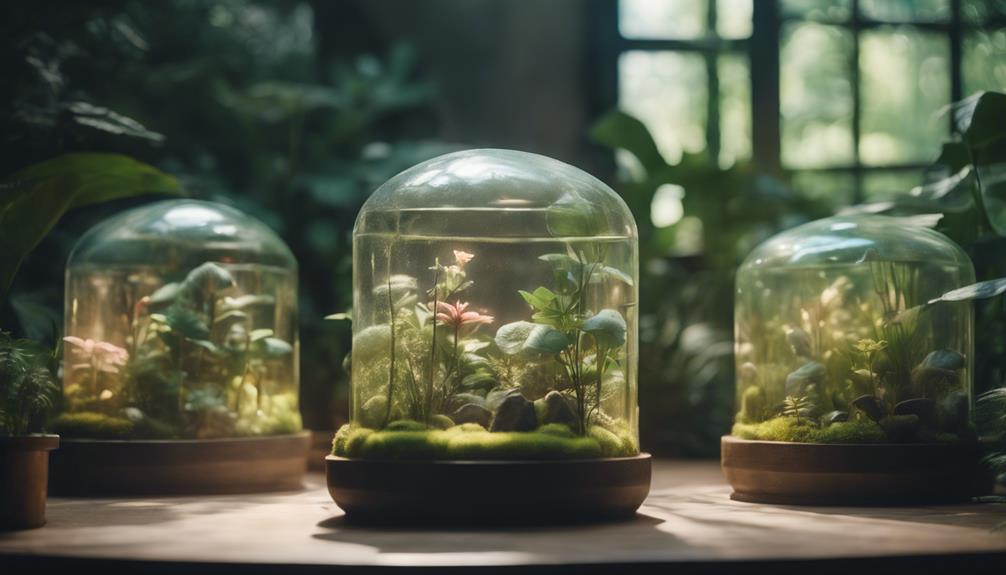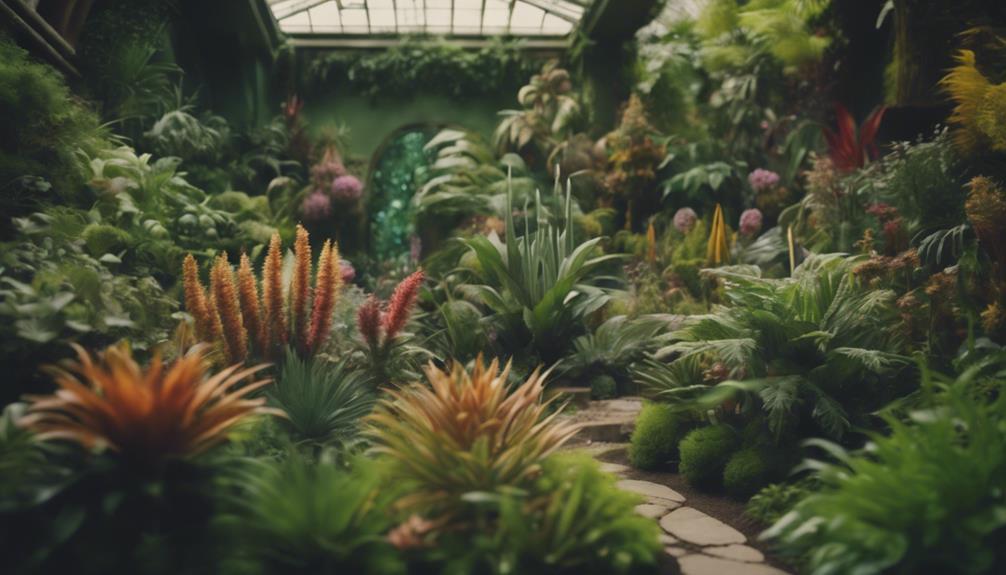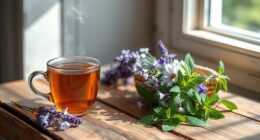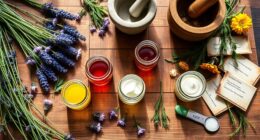Herbology, a timeless tradition that spans ancient cultures and traditions, has evolved into a sophisticated system of healing that integrates traditional knowledge with modern scientific principles to harness the therapeutic potential of plants. From its roots in ancient wisdom to its modern applications in healthcare, herbology combines phytochemistry, botany, and pharmacognosy to create effective remedies. As we explore the cultural significance, practical uses, and modern healthcare applications of herbology, we uncover the intricate relationships between plants, human health, and the natural world. As we venture further, the secrets of this ancient tradition await discovery.
Key Takeaways
• Herbology combines traditional knowledge with modern scientific principles to harness the medicinal power of plants for human health.
• Phytochemistry explores the chemical constituents of plants, revealing active compounds that interact with the human body.
• Ancient cultures have revered herbology as a time-honored tradition, using plants for medicinal and therapeutic purposes.
• Herbal medicine integrates traditional wisdom with modern science to alleviate symptoms, reduce side effects, and promote well-being.
• By preserving traditional knowledge, herbology showcases the ingenuity and resourcefulness of ancestors, enriching modern healthcare practices.
Foundations of Ancient Wisdom
Across cultures, ancient civilizations have revered herbology as a time-honored tradition, weaving together threads of traditional wisdom, botanical expertise, and medicinal knowledge to create a rich tapestry of natural healing practices.
Herbology's roots span various cultures and traditions, where herbal medicine uses plants for medicinal and therapeutic purposes. Delving into botany, pharmacognosy, and traditional medicine, herbalists study the intricacies of plant-based remedies.
This ancient wisdom combines traditional knowledge with modern scientific principles, ensuring the safety and efficacy of herbal treatments. By integrating knowledge from ages past with current research, herbology offers a holistic approach to healthcare, enhancing patient care with natural treatment options.
The Science of Herbal Medicine

As herbalism integrates traditional wisdom with modern scientific principles, the scientific foundations of herbal medicine are rooted in the study of phytochemistry, which explores the chemical constituents of plants and their interactions with the human body.
This field of study investigates the active compounds found in plants, such as alkaloids, flavonoids, and glycosides, to understand their molecular interactions with the human body.
Cultural Significance and Heritage
How have ancient cultures, from Native American tribes to Indigenous Australian communities, harnessed the therapeutic potential of plants to shape their traditional medicinal practices?
These cultures have long recognized the intrinsic value of plants in promoting health and wellness.
In Native American traditions, herbs like Echinacea are used to support immune system function, while Indigenous Australians utilize tea tree oil for its antiseptic properties.
The rich cultural heritage of herbal medicine is a demonstration of the ingenuity and resourcefulness of our ancestors.
By examining the cultural significance of herbal medicine, we gain a deeper appreciation for the intricate relationships between humans, plants, and the natural world.
This cultural significance underscores the importance of preserving traditional knowledge and promoting sustainable practices in herbology.
Practical Applications of Herbs
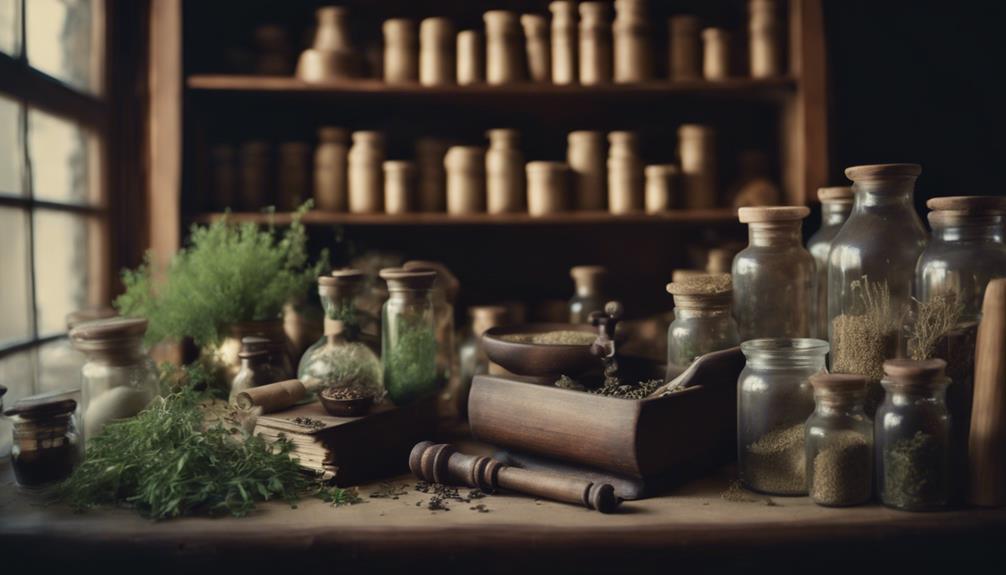
Beyond the rich cultural heritage of herbal medicine, the practical applications of herbs in everyday life are multifaceted and rewarding. Herbs can be incorporated into daily routines to enhance culinary experiences and provide health benefits. Fresh or dried herbs can be used in cooking, teas, and remedies to promote overall well-being.
| Herb | Practical Application |
|---|---|
| Basil | Adds flavor to culinary dishes, supports digestive health |
| Rosemary | Enhances memory and cognitive function, used in skincare |
| Mint | Soothes digestive issues, freshens breath, and cools skin |
| Chamomile | Promotes relaxation, calms anxiety, and aids in sleep |
Incorporating herbs into daily life can be simple and rewarding, and with the right education and certification, individuals can fully realize the potential of herbology.
Herbology in Modern Healthcare
In modern healthcare, herbology has emerged as an essential complementary approach, offering patients holistic treatment options that enhance conventional therapies. This integration has led to improved patient outcomes, as herbal remedies can alleviate symptoms, reduce side effects, and promote overall well-being.
Healthcare providers are now incorporating herbal medicine into treatment plans, recognizing the benefits of a multidisciplinary approach. By combining traditional herbal knowledge with modern scientific principles, healthcare professionals can provide inclusive care that addresses the physical, emotional, and spiritual needs of patients.
As a result, herbology is increasingly recognized as a valuable adjunct to conventional medicine, enhancing patient care and promoting a more holistic approach to healthcare.
Ethical and Sustainable Practices
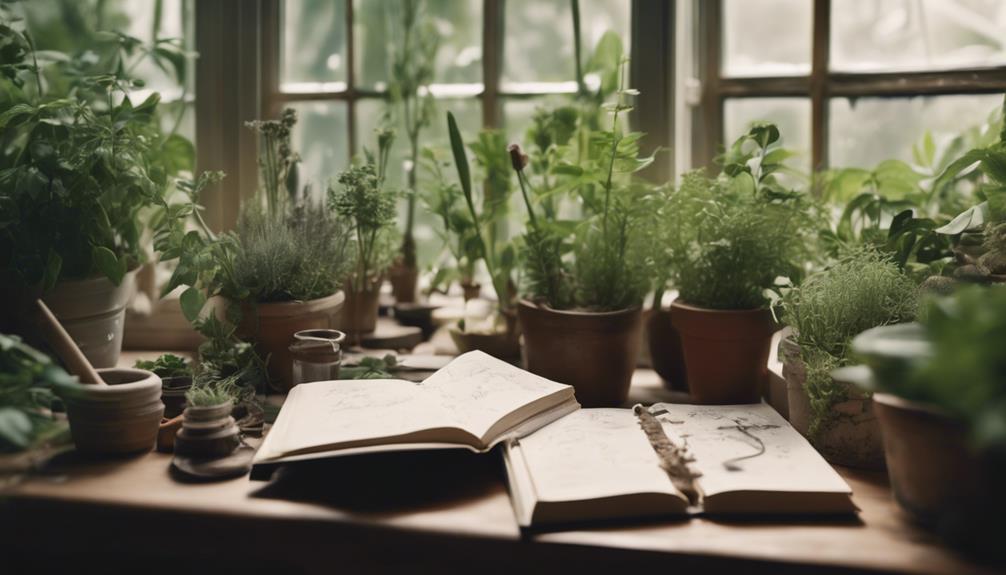
As herbology continues to play an essential role in modern healthcare, the importance of adhering to ethical and sustainable practices becomes increasingly paramount, ensuring the responsible development and use of herbal remedies. This involves prioritizing patient safety, conserving plant species, and promoting fair-trade initiatives.
| Ethical Considerations | Sustainable Practices |
|---|---|
| Preventing adverse reactions | Conserving plant species |
| Ensuring patient safety | Fair-trade initiatives |
| Natural and thorough treatment | Social responsibility |
| Responsible development | Environmental stewardship |
Education and Certification Paths

Rigorously structured education and training programs are crucial for aspiring herbalists, providing a thorough foundation in botany, pharmacognosy, and traditional medicine. These programs equip students with the necessary knowledge and skills to practice herbology safely and effectively.
Certification paths typically involve completing a detailed curriculum, followed by a certification exam. The American Herbalists Guild, for example, offers a Registered Herbalist (RH) certification, which demonstrates expertise in herbal medicine. Other organizations, such as the National Institute of Medical Herbalism, provide certification programs that focus on specific areas of herbology, like herbal therapy or botanical medicine.
Frequently Asked Questions
Can Herbology Be Used to Treat Mental Health Disorders?
Mental health disorders can be addressed through herbology, which has been utilized for centuries to treat anxiety, depression, and insomnia.
Certain herbs, such as St. John's Wort, valerian, and passionflower, have been shown to exhibit anxiolytic and sedative properties. Additionally, adaptogenic herbs like ashwagandha and rhodiola rosea can help mitigate stress and promote emotional balance.
While more research is needed, herbology offers a promising natural approach to mental health support.
How Do Herbal Remedies Interact With Prescription Medications?
Herbal remedies can interact with prescription medications, leading to adverse effects or decreased efficacy. Phytochemicals in herbs can inhibit or induce cytochrome P450 enzymes, altering medication metabolism.
Concomitant use of herbs and medications can cause interactions, such as St. John's Wort decreasing blood levels of certain medications or garlic enhancing the risk of bleeding with anticoagulants.
Healthcare providers should monitor patients' herbal supplement use and adjust medication regimens accordingly to guarantee safe and effective treatment.
Are Herbal Supplements Regulated by Government Agencies?
In contrast to the strict regulations on prescription medications, herbal supplements are not strictly regulated by government agencies. While the FDA has the authority to remove harmful products from the market, the industry largely relies on self-regulation. Manufacturers are responsible for ensuring the safety and efficacy of their products, but inconsistencies in quality and labeling are common.
This lack of oversight raises concerns about the reliability of herbal supplements.
Can Herbology Be Used in Conjunction With Chemotherapy?
In conjunction with chemotherapy, herbology can play a complementary role in cancer treatment. Certain herbs, such as turmeric and ginger, have anti-inflammatory properties that may alleviate chemotherapy-related side effects.
However, it is important to consult with a qualified herbalist and oncologist to guarantee safe and effective integration. Herbs may interact with chemotherapy drugs or exacerbate side effects, so careful monitoring and individualized treatment plans are essential.
Do Herbal Remedies Have Expiration Dates or Shelf Lives?
As we explore the world of herbal remedies, an important question arises: do they have expiration dates or shelf lives? The answer lies in the domain of phytochemistry.
Herbal remedies, being derived from plant extracts, are susceptible to degradation over time. Factors like storage conditions, packaging, and ingredient quality affect their potency and stability.
While some herbal remedies may remain effective for years, others may lose potency within months. Understanding these factors is crucial to ensuring the safety and efficacy of herbal treatments.
Conclusion
As the petals of knowledge unfurl, the ancient wisdom of herbology reveals its profound significance in modern healthcare.
Like a skilled apothecary, the discipline carefully blends traditional wisdom with scientific rigor, yielding a potent elixir of natural remedies.
As the world gravitates towards holistic wellness, herbology stands poised to reveal its full therapeutic potential, illuminating the path to a healthier, more sustainable future.


